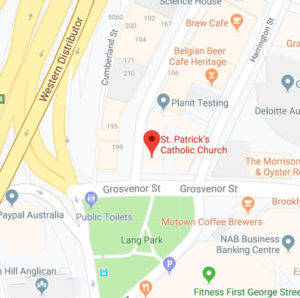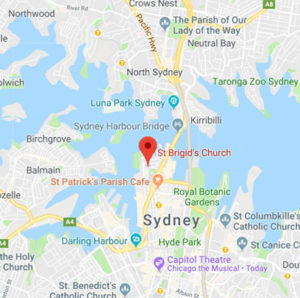1 – Australian Government Requirements
A couple marrying in Australia need to complete a “Notice of Intended Marriage” sometime in the period 18 months – 1 month prior to the wedding. In the case of couples living overseas, it will need to be completed and witnessed where they are living and then mailed to the celebrant at St Patrick’s. Only certain categories of persons are authorised under the Marriage Act to witness a “Notice of Intended Marriage”.
Australian diplomatic and consular officials are authorised witnesses. So too are notaries public. How close are you to an Australian embassy or consulate? You need to furnish a birth certificate or a current passport when completing this form. A copy of the “Notice of Intended Marriage” will be sent to overseas couples once a booking has been confirmed.
2 – Church Requirements
Each couple marrying in a Catholic ceremony needs to complete a “Pre-Nuptial Enquiry” form, which basically establishes for Church purposes that they are free to marry.
A basic requirement is that at least one of the parties is a baptised Catholic of the Latin (Roman) rite. It will need to be filled out with a priest of the Catholic diocese where you are living. He would normally forward it to his bishop, who would send it to the archbishop of Sydney, and then it would finally be sent to the celebrant at St Patrick’s.
Your celebrant here at St Patrick’s will generally forward a letter of introduction to be presented to a local priest, asking him to assist you in completing the form and preparing for your marriage When filling out the “Pre-Nuptial Enquiry” the Catholic party will need to present a copy of their Baptism Certificate which has been issued within the last 6 months. This can be obtained by contacting the parish where the baptism took place. An additional form called a “Mixed Marriage Dispensation” needs to be filled out by the Catholic party when he or she is marrying someone from another Christian denomination, or a person who has not been baptised.
3 – Ceremony
The marriage ceremony can be either free-standing, or include Mass. The ceremony on its own takes around 25-30 minutes, and with Mass, around 60 minutes. The primary consideration in deciding which option to take is to reflect on which alternative best matches you as a couple. If the eucharist is a significant part of your faith life at the present time, that perhaps indicates that a Mass might be appropriate. A secondary consideration is the people who will be attending the wedding: which type of ceremony would be the best fit for them? The ceremony without Mass is not a second-best option. The marriage ceremony is exactly the same in both cases. Couples living overseas will be sent a booklet to help them plan their ceremony. Within a given framework, there is considerable choice with regard to the wording of prayers, choice of scripture readings, and wording of the vows.
Preparing from a distance has its difficulties, but is certainly manageable, particularly if the various elements are attended to sooner rather than later.
Final approval for marriages of couples living overseas cannot be given by St Patrick’s parish until all required Church and civil documents have been received by the marriage celebrant.


